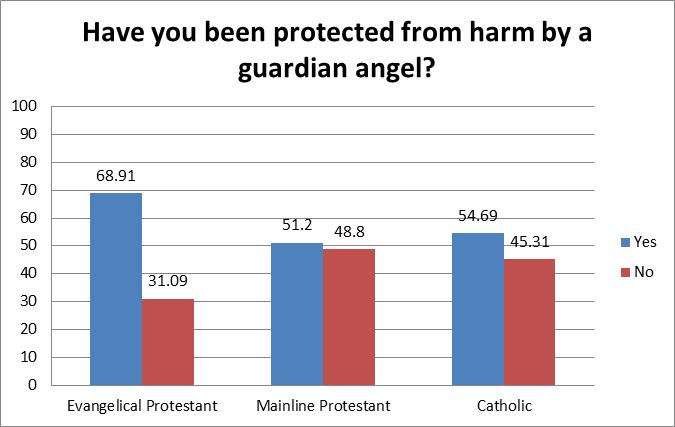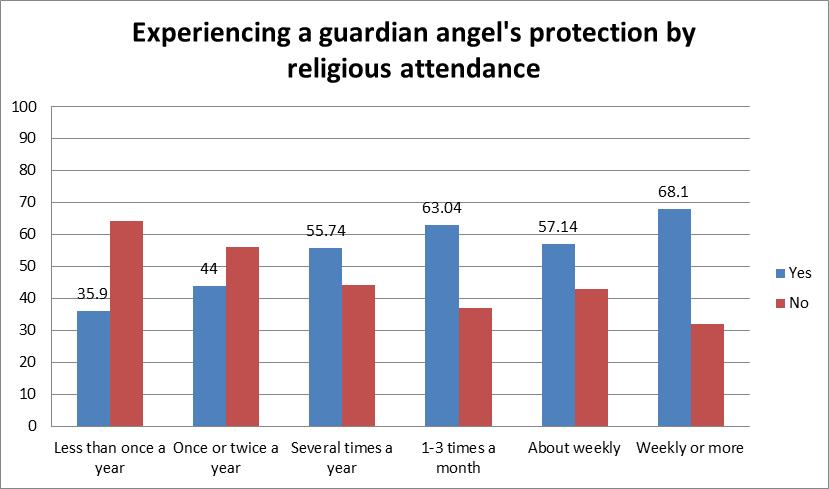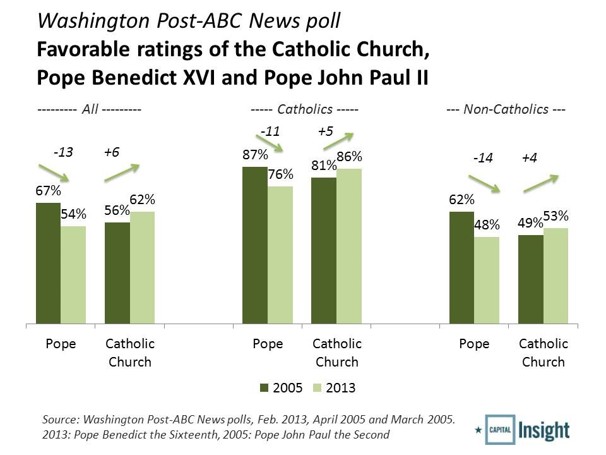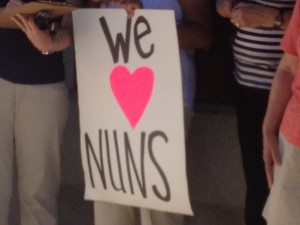 One of the things that I like about Catholicism is its liturgical calendar, complete with feast days and other special celebrations throughout the year. It seems like there is always some saint or special occasion to celebrate. This week is no different, though it is unique in that it has a particular focus on angels and features two days dedicated specifically to angels: 1) the feast of the three archangels – Sts. Michael, Gabriel, and Raphael – and the memorial of the guardian angels. Given these occasions I thought it would be interesting to look at what Catholics think about angels. How many Catholics believe in angels? How do Catholics compare to other religious traditions? Can we say anything about the experiences they attribute to angels? Luckily the Baylor Religion Survey Wave II (2007) contains a couple questions about angels that can help in this regard:
One of the things that I like about Catholicism is its liturgical calendar, complete with feast days and other special celebrations throughout the year. It seems like there is always some saint or special occasion to celebrate. This week is no different, though it is unique in that it has a particular focus on angels and features two days dedicated specifically to angels: 1) the feast of the three archangels – Sts. Michael, Gabriel, and Raphael – and the memorial of the guardian angels. Given these occasions I thought it would be interesting to look at what Catholics think about angels. How many Catholics believe in angels? How do Catholics compare to other religious traditions? Can we say anything about the experiences they attribute to angels? Luckily the Baylor Religion Survey Wave II (2007) contains a couple questions about angels that can help in this regard:
1. In your opinion, does each of the following exist? Angels. Response categories: 1) Absolutely not; 2) Probably not; 3) Probably; 4) Absolutely
2. Please indicate whether or not you have ever had any of the following experiences: I was protected from harm by a guardian angel. Response categories: 1) Yes; 2) No
Below I show some cross tabulations of how Catholics compare to Evangelical and Mainline Protestants regarding these two questions. Then looking at only the Catholic population (n=384) I show how responses to the second question differ by Mass attendance and religious identity. It is important to note though that the word ‘angel’ was not defined by the survey so we cannot know whether or not respondents meant angels to be spiritual, non-corporeal (bodiless) beings as defined by the Catechism of the Catholic Church. Readers should keep this in mind.




—————-
Overall we see that there is a high rate of belief in angels among Catholics, though less Catholics believe in angels than Evangelical Protestants. Only 15% of Catholics responded that they absolutely did not or probably did not believe in angels. Moreover, over half of Catholics (55%) claim to have had an experience of a guardian angel protecting them from harm. Even among Catholics who do not often attend Mass or who identify as less traditional there are still a good number who claim to have experienced a guardian angel’s protection.
For Catholic Conversation readers, do you any of these numbers surprise you?









